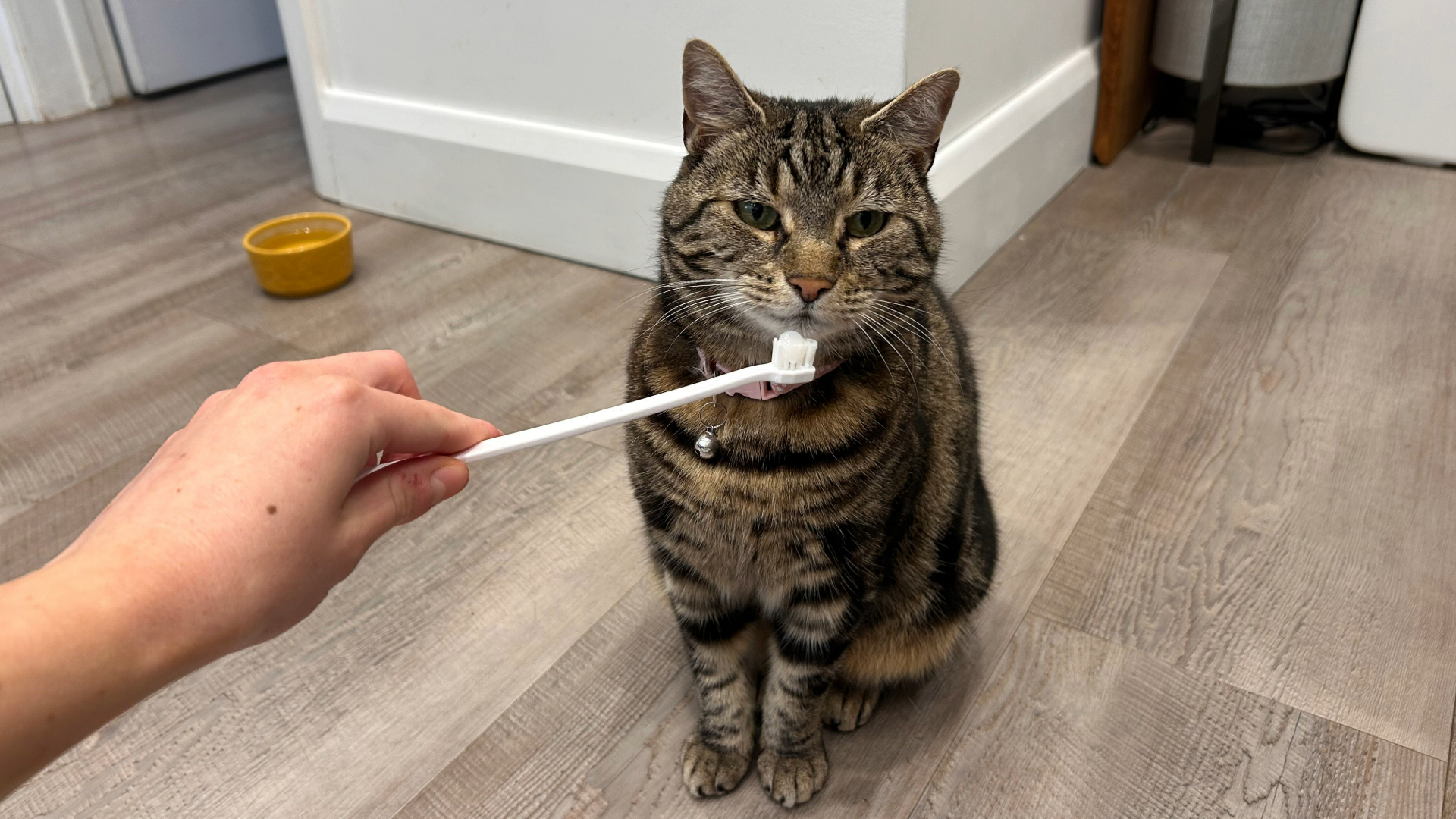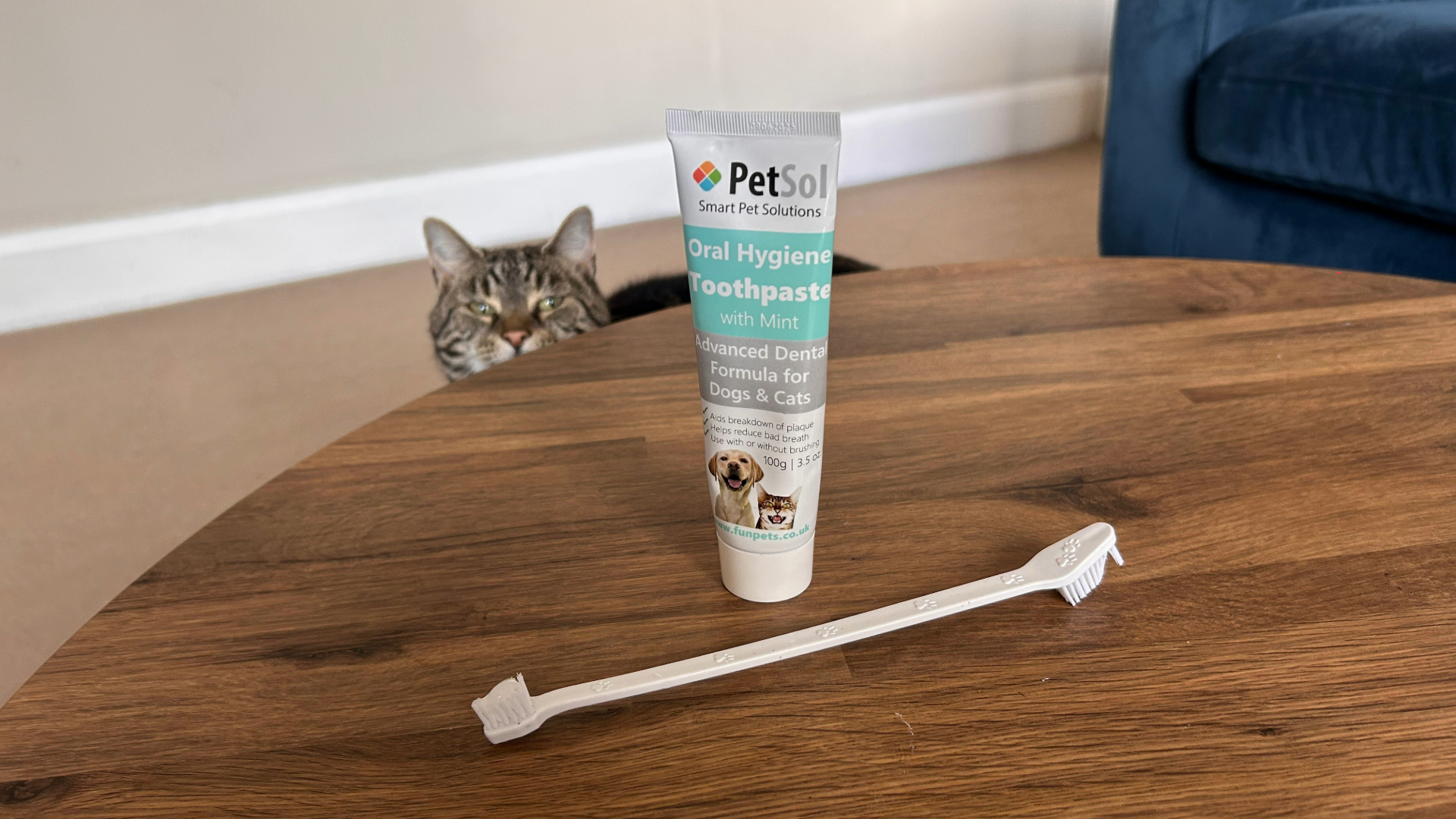
Before my cat Nala was diagnosed with gingivitis, I had no idea how important it was to brush her teeth. The idea of sticking a mint-flavored toothbrush in her mouth sounded like a recipe for disaster – and a painful bite!
Gingivitis, also known as periodontal disease, is caused by a buildup of bacterial plaque and tartar, with symptoms like swollen, red gums and bad breath. Old age, crowded cat teeth, and autoimmune diseases can be contributing factors, as well as a lack of proper dental care or conditions like diabetes in cats.
Thankfully, Nala's vet told us that she didn't have any underlying health conditions and that it's just something that can happen as a cat gets older. We had her teeth professionally cleaned, and were advised to keep on top of her dental health with regular toothbrushing sessions.
I was skeptical that Nala would let me go near her mouth with a toothbrush, but after gradually introducing it to her (and lots of positive reinforcement with the best cat treats), I managed to brush them for short sessions.
Why should you brush your cat's teeth?

Since gingivitis can cause pain and discomfort for your cat, it's important to address it sooner rather than later, before it develops into a more serious dental problem. It might also be a sign of an underlying health condition, so regular check-ups are essential.
Learning how to brush your cat's teeth is a big part of it, but Dr Coder says you should always check with your vet first to determine if there are any other issues that need to be treated beforehand.
She explains: "Gingivitis can be an indicator of more serious disease, or left untreated, can lead your cat to develop other dental problems, so always work with your veterinarian to provide your cat the best oral care possible.
"If your cat has gingivitis, be sure to check with your vet to ensure there is not a more serious problem in her mouth. Often, there is plaque, tartar, or infection under the gums that must be treated or removed before you can start home care.
"There are also some disease processes that cause severe gingivitis in the absence of actual tooth problems. Once the underlying cause has been treated, prevention of disease can be assisted with at-home care."
How to brush your cat's teeth

Don't worry if you've never brushed your cat's teeth before – Dr Coder has shared her top tips for making things easier:
1. Get your cat used to the toothbrush
Before you do anything, you'll want to get your cat accustomed to the toothbrush by touching their face and mouth with it. Alternatively, you could dip a cotton swab in tuna water and use treats as rewards to make the experience more enjoyable.
2. Choose the right toothbrush and toothpaste
Never give your cat human toothpaste, as it contains toxic ingredients like fluoride. You can buy pet-friendly toothpastes – some even come in flavors like chicken and beef, which can make the process more enjoyable.
Dr Coder says: "Use products approved by the Veterinary Oral Health Council (VOHC) that have been evaluated by veterinary professionals to ensure safety and efficacy."
3. Start slowly
It's OK if you can't brush your cat's mouth completely; just start slowly with one or two sections at a time.
Dr Coder says, "Work your way up to the full mouth if you can, but even if you can only get one part done each session, it is still better than not brushing at all."
4. Reward your cat
Last but not least, be sure to reward your cat with food or treats after each brushing session – even if it didn’t feel like you got much done!
Cats are masters at hiding pain, and I had no idea that Nala was secretly suffering from gingivitis – and I’m not alone, upto 85% of cats live with dental disears and many owners are unaware. That’s why regular check-ups and frequent brushing are always important to keep their teeth and gums in tip-top condition.
Want to learn more? Read our expert guides on stomatitis in cats and keeping cat teeth clean. Or if you're planning on getting your feline's teeth professionally cleaned, check out these top tips for keeping your cat calm at the vet
Edited by Georgia Guerin and Alexis De Leaver.







